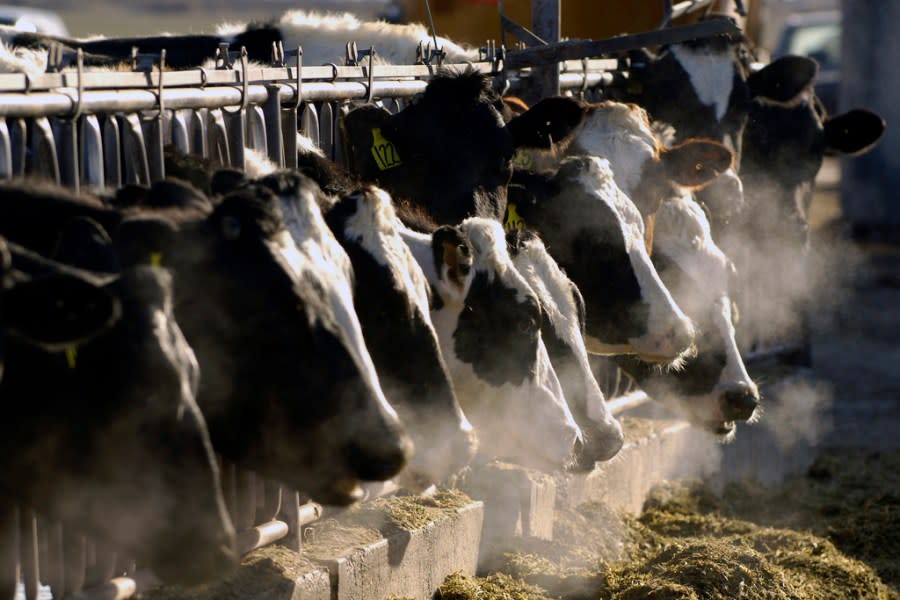Officials pledge reimbursements for dairy farms impacted by avian flu

Federal officials on Friday pledged to reimburse farmers for some of the costs associated with keeping their herds protected from an outbreak of the avian flu virus that’s rapidly spreading among dairy cows.
The funding includes up to $28,000 over the next 120 days to help individual farms test cattle and bolster biosecurity efforts to further limit the spread of the H5N1 virus between herds.
The U.S. Department of Agriculture allotted $98 million in existing funds to support the actions of states with affected herds restrict interstate movement of cattle, and health officials announced $101 million toward expanded surveillance, tests, treatments, and vaccines for the virus.
Officials said to date, the virus has been found in 42 herds across nine states, with one confirmed case in a human.
Agriculture Secretary Tom Vilsack said federal authorities want to give states an incentive to act.
“We don’t necessarily have jurisdiction today over what happens inside the state. States are now considering and thinking about the possibility of preventing movement of sick cows or movement of cows without negative tests. We obviously encourage that and support that,” Vilsack told reporters.
The Agriculture Department said it will also compensate dairy farmers for lost milk production from infected cows.
“Dairy cows that have H5N1 generally recover well and there’s little mortality associated with this disease. It does dramatically limit milk production, which can cause economic loss for producers with affected premises,” Vilsack said.
Additionally, dairy farmers and farmworkers that choose to participate in a workplace study conducted by the USDA and the Centers for Disease Control and Prevention would be compensated. But participation is voluntary.
Farmers have been reluctant to allow federal health officials onto their land to test potentially infected cattle amid uncertainty about how their businesses would be impacted. Farmworkers have also been reluctant to participate in screening because of potential immigration fears.
“In terms of farmworkers, that really is a voluntary circumstance,” Vilsack said. “I’m sure if they’re willing to work with CDC, I’m sure CDC would be happy to oblige.”
Another of the incentives offered Friday was reimbursement for veterinary costs to help treat and sample affected cattle that test positive for the virus. USDA said it would provide up to $10,000 per farm, but that money can only be allocated once there’s a positive test.
“We need to be pouring resources into proactive testing to identify transmission as soon as possible, not just waiting to find infected farms,” Michael Mina, chief science officer at eMed and a clinical testing expert, told The Hill.
The announcements Friday come amid calls from infectious disease and public health experts for a clearer picture on how the virus is spreading. They have expressed concerns that agencies are not testing enough, and farmworkers are at risk every time they are exposed to potentially infected cattle.
“We recognize that from a worker safety perspective, there can be risks even before the herd is confirmed to be positive,” CDC Deputy Director Nirav Shah told reporters Friday.
Still, officials emphasized the virus is a low risk to the general public and the milk supply is safe.
Since USDA instituted an order at the end of April requiring negative test before lactating cattle are allowed to cross state lines, there have been 905 tests conducted, 112 of which were presumptive positives, the agency said. But it also stressed that the number of tests doesn’t necessarily correlate to individual animals.
“It’s still in the same nine states and that’s the most positive thing about where we are,” Vilsack told reporters.
Editor’s note: The number of tests has been updated due to incorrect information provided by USDA.
For the latest news, weather, sports, and streaming video, head to The Hill.


